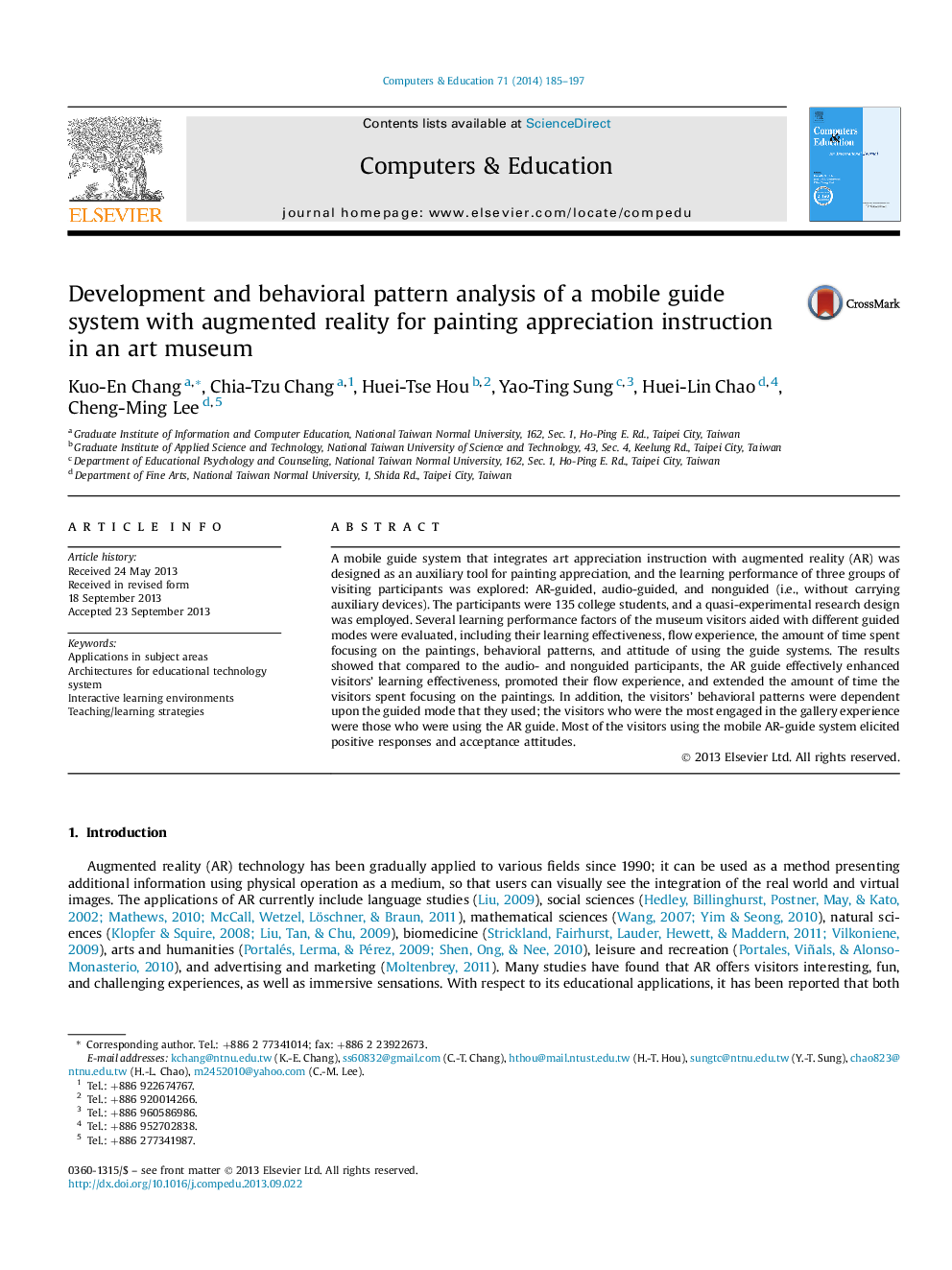| Article ID | Journal | Published Year | Pages | File Type |
|---|---|---|---|---|
| 348447 | Computers & Education | 2014 | 13 Pages |
•Design a mobile AR-guide system based on art appreciation instructions.•Evaluate the learning performance of three modes during a visit to an art museum.•The visitors' behavioral patterns were dependent upon different guided modes.•The AR guide elicited positive responses and acceptance attitudes.
A mobile guide system that integrates art appreciation instruction with augmented reality (AR) was designed as an auxiliary tool for painting appreciation, and the learning performance of three groups of visiting participants was explored: AR-guided, audio-guided, and nonguided (i.e., without carrying auxiliary devices). The participants were 135 college students, and a quasi-experimental research design was employed. Several learning performance factors of the museum visitors aided with different guided modes were evaluated, including their learning effectiveness, flow experience, the amount of time spent focusing on the paintings, behavioral patterns, and attitude of using the guide systems. The results showed that compared to the audio- and nonguided participants, the AR guide effectively enhanced visitors' learning effectiveness, promoted their flow experience, and extended the amount of time the visitors spent focusing on the paintings. In addition, the visitors' behavioral patterns were dependent upon the guided mode that they used; the visitors who were the most engaged in the gallery experience were those who were using the AR guide. Most of the visitors using the mobile AR-guide system elicited positive responses and acceptance attitudes.
